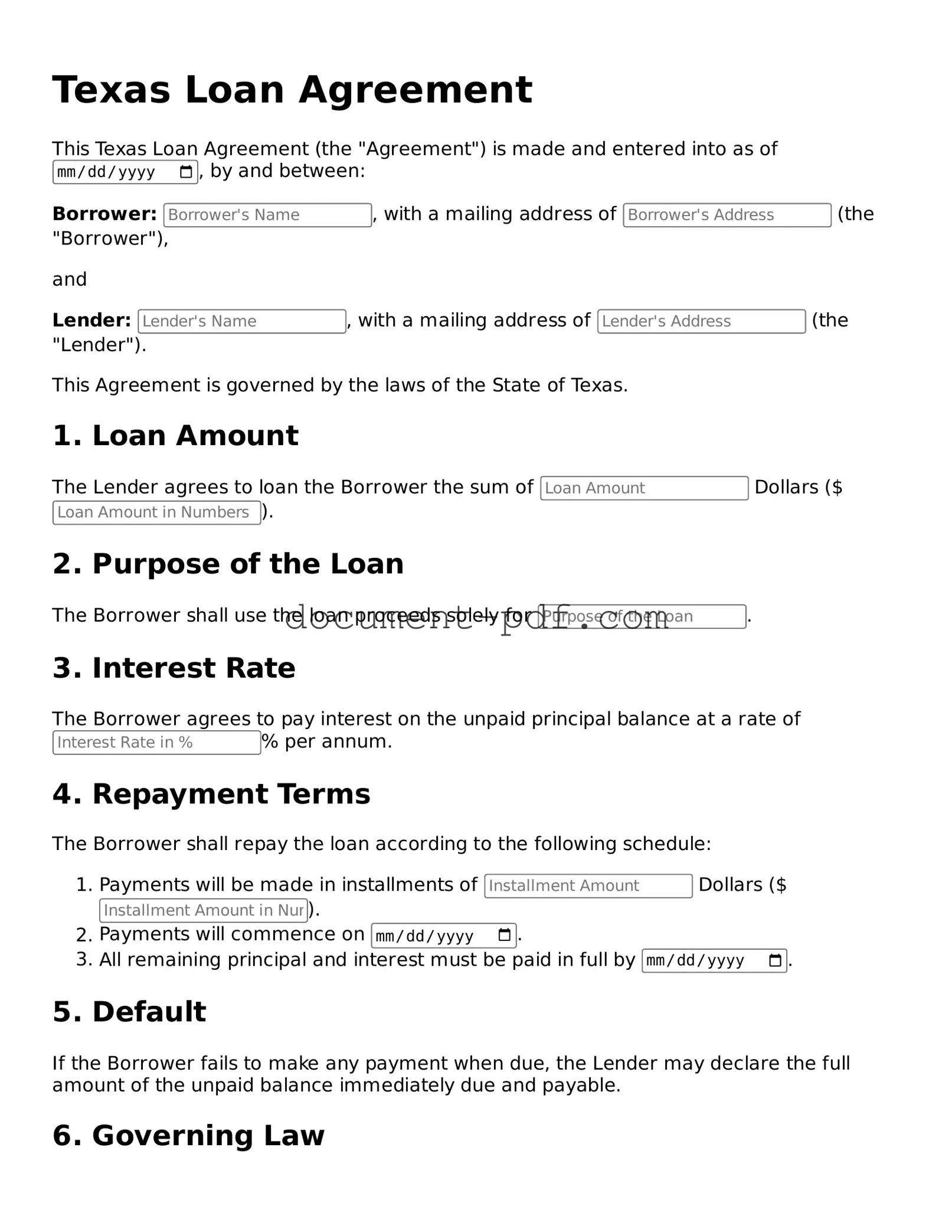Attorney-Verified Texas Loan Agreement Template
A Texas Loan Agreement form is a legal document that outlines the terms and conditions under which a borrower receives funds from a lender. This form specifies the amount of the loan, interest rates, repayment schedule, and other essential details. Understanding this agreement is crucial for both parties involved, ensuring clarity and protection of their rights.
Ready to proceed with your loan? Fill out the form by clicking the button below.
Access Loan Agreement Editor Here
